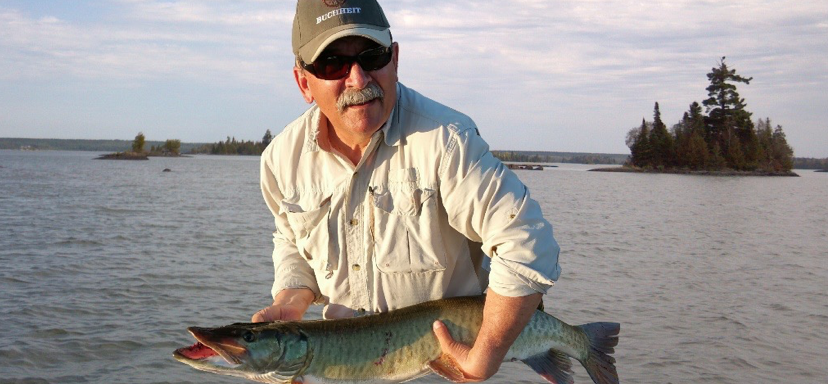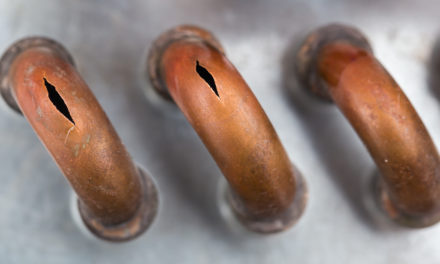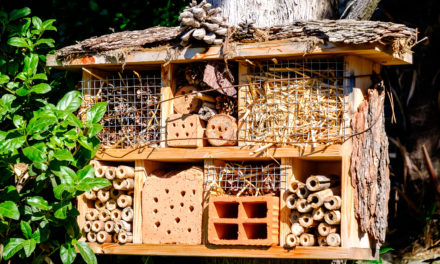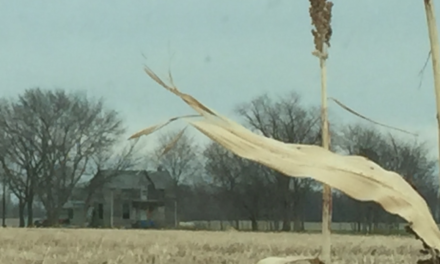To many fishermen, muskies, the legendary fish of 10,000 casts, used to be synonymous with fabled destinations to remote areas of the Canadian Shield, vast places like Lake of the Woods and Eagle Lake, in Ontario. Vermilion, Mille Lacs, Minnetonka, Lac Vieux Desert, the Chippewa Flowage and many other lakes provided similar opportunities to cross paths with this elusive quarry in the Northwoods of Minnesota and Wisconsin. Muskies, however, are now available to anglers in Buchheit Territory thanks to the efforts of fisheries biologists at the Illinois Department of Natural Resources who have stocked them in many lakes throughout the state. Kinkaid Lake, near Murphysboro, is one of my favorite destinations to pursue this toothy predator.
Nestled in the Shawnee National Forest, Kinkaid is known for its heavily wooded shorelines interspersed with imposing sandstone bluffs. The observant visitor may encounter deer, beaver, wild turkey and bald eagles. Pileated woodpeckers call from the shadows in deep ravines where they search for insects in stands of mature oak, maple and beech trees. For the fisherman, Kinkaid is renowned for its largemouth bass, crappie (of state record proportions) and my chosen quarry – muskie. To the dedicated muskie hunter they arguably represent the ultimate challenge in freshwater fishing. Rare in occurrence and unpredictable in behavior, muskies often provide a source of seemingly endless frustration, yet they can be incredibly gratifying to see let alone catch.
With warming water in the spring, muskies move to the backs of coves to spawn in the shallows. After completing this process the fish will transition back to their mid-lake haunts. Along the way they often frequent points and flats looking for an easy meal to help replenish the resources depleted by the rigors of spawning.
As I launched my boat that afternoon I was thinking about where I might intercept the fish as they moved back to the main lake basin. The very first point I checked held a fish and it aggressively pursued my crankbait back to the boat. The clear water in conjunction with a quality pair of Polaroid glasses allowed me to see all of the action. Unlike most other fish, muskies do not seem to fear the presence of a boat and a fish that is “hot” will follow the lure right up to the boat. The trick then is to smoothly change from retrieving your bait with the reel into a boatside maneuver – you push the end of your rod down into the water and work the lure in a wide oval or “figure 8” pattern trying to entice the fish to bite. This fish didn’t follow on the 8 but turned and headed back to the security of the weedbed. The next point I visited also held a resident fish but it too was noncommittal.
Checking several other points over the next couple of hours didn’t elicit any additional follows. Pausing over some refreshments, I finally decided the best course of action might be to explore some nearby flats. I had barely started casting when a fish appeared in hot pursuit just behind my crankbait. This one went around the 8 multiple times before bumping the bait with its mouth closed and then disappearing in the next instant. That got the heart racing!
I continued casting the flat, noting the locations of clumps of weeds and varying retrieve angles to run my crankbait as close as possible without collecting a hookful of milfoil. Every time I missed my calculation I was regarded with gobs of moss clinging to the hooks. After working this area about 20 minutes another fish appeared. This one was a real tanker and she came in slowly and stayed deep, refusing to commit to the 8, instead disappearing effortlessly back into the murk. A few minutes later another smaller fish appear, went around once boatside and then scooted back into the weeds.
I continued to methodically fish that same area. After one particularly long cast I felt the tug of weeds on the treble hooks. I speeded the retrieve to get the bait back into the boat as quickly as possible so I could clear it of moss and make another cast. As I lifted it up into the air I caught a flash of movement to my right and then unbelievably the head of a muskie cleared the surface of the water and strained to reach the moss-covered lure hanging from the tip of my rod. It was so close to me that I could have patted it on the head. As it slowly sank back into the water I snapped the rod and inexplicably the moss all fell off the hooks. Looking toward the front of the boat I saw the fish slowly swimming back in the same direction it came from as I jammed the rod into the water and started a large oval. She swapped ends in an instant and grabbed the bait before it even made the first turn. Now I was attached to a very green fish with just the length of a 12” fluorocarbon leader. Netting fish like this solo is no easy task but eventually I led her into the bag, removed the hook, posed for a quick picture and released her to fight another day.
This is the stuff of muskie fishermen’s dreams. I am thankful that I have the opportunity to pursue this incredible fish here in Buchheit Territory. I hope to share more about my passion for fishing for these majestic creatures with you.
Until then,
Merle Schmierbach






